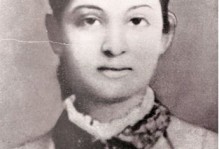In Search of Pather Panchali’s Nischindipur at Boral Village
Boral Village near Garia township of Kolkata is where Satyajit Ray unfolded his Pather Panchali saga. Boral became the setting for Nischindipur, an idyllic but impoverished Bengal village. Here Durga and Apu would run with abandon, Sarbojaya would stoically face poverty and from where Harihar thought he would never have to leave.
Probashionline took a trip to Boral to see if traces from the film scenes can still be identified. It was no less than a pilgrimage for the team to be at the locale of the film which put independent India firmly on the world cinema map and is rated amongst the greatest films ever made globally.
Ray started scouting location for Pather Panchali in 1953. In his search for the setting of Nischindipur, Ray gave a pass to Jadavpur and Garia villages and finally settled for Boral about 6 miles from the Ray residence at Tollygunge. In the immediate aftermath of partition Jadavpur, Garia, Baghajatin , Bijoygarh villages were experiencing winds of change. New refugee colonies were coming up. Boral till then remained relatively unaffected. However subsequently Boral was also to fall to the refugee influx. In an interview with James Blue in 1968, Ray mentions “ it (Boral) is unrecognizable now from the days of Pather Panchali. It is no longer pure, its spoiled. It was once very nice indeed , with long areas of no huts (refugee huts)”.
The film location was found by accident. One of Bansi Chandragupta’s friends mentioned he had a small house at Boral . Bansi was the friend of Ray and the film’s art director. Satyajit and Bansi went to see the village, but it was a monsoon day and impossible to view it properly. They returned when the weather cleared and searched the village to establish its possibilities. They found a house no more than a heap of ruins, but it was potentially suitable to represent the dilapidated family house of Harihar Roy. Hence they decided that the bulk of the money must be spent by Chandragupta in reconstructing this house as the main location. The house was taken on rent at Rs. 50/month from the Mukhopadhyay family who owned the property. Additions like exterior walls, doors and a kitchen were added to the house.
A metro ride to Kobi Nazrul Metro Station and a auto ride to Boral (Bokultala) took us to the stage of Pather Panchali. On way there were not many traces of Ray’s Nichindipur. We saw rows of builder flats at the periphery of Boral ( now a municipal town with pin code 700154) far removed from the mango groves and large expanse of greenery with pathways as seen in the film. We saw shops which sold chips and coke, there were no traces of ek poishar muri ( puffed rice worth one paisa) which Durga would buy . The bill board of mobile phone companies vie for attention, no more does Apu come running shouting Chitthi-Chitthi (letter) anymore.
On our exploration of the Pather Panchali film locale we were lucky to have Karun and Shikha Gupta as our guide. They are long time residents of Boral and are proud of the village’s Pather Panchali legacy. Inidentally the Gupta family had one family member in the Pather Panchali cast. The family cow Lalu is seen in the film.
Our first tryst with Pather Panchali at Boral was the statue of Satyajit Ray marking the general site of film shooting near the Bokultala Bus Stand , Boral. The statue was inaugurated by His Excellency Saiyid Nurul Hasan, Governor of West Bengal in 1990. Need we say the statue only has a faint resemblance with the film director. It however calls for applause that offcialdom has put a sign post in form of the film director’s statue marking the Pather Panchali film locale.
Behind the statue at about 50 mts walk is the house of Harihar, his wife Sarbajaya, their daughter Durga and son Apu in the film. It is here that Durga died after catching cold, here Sarbajaya shed many a tears as she waited for her husbnand to return and here Apu took his first lessons. The house which was a diliapated homestead was briliantly adapted for Pather Panchali. The original structure had one room which served as Durga’s pishi’s(aunt) room in the film. The other parts of the house were part of the set created for the film. Here now stands a pucca house. The house has been extended but the original one room house has been kept.
Then and Now: The entry to the house of Harihar and Sarbojaya. Left: The young Durga at the entrance to her house. Right : The same entrance today, the boundary has been renovated . When we went visiting a inverter battery was being loaded at the gate, signs of changed times.
Left: The courtyard of the house of Harihar and Sarbojaya has got significantly changed. New construction has come up. The signs of modern times include the split AC installed at the newly constructed portion. The tulsi pedestal has been preserved (highlighted in Red) . On the right: the courtyard as in the film is shown aong with the Tulsi pedestal which had an important symbolic presence in many scenes.
The pond where Harihar takes bath after cremation of his elder sister. This pond is besides the house where Pather Panchali was shot. Presently the pond has very little water. With lots of construction in and around Boral, the water bodies donot flourish as they used to once.
Prior to leaving Nischindipur for finding employment elsewhere, Harihar prays at the village temple. These two temple structures stand today and prayers are held here. As per a plaque encased in the masonry , the temples were constructed in 1698.
The Bokul tree (then and now) which provided shelter to Apu and Durga during the important scene in the film where Durga gets wet during torrential rain. The pond exists but it has now signficantly shrunk
As we start back from Boral, the haunting song of Durga’s Pishi comes to mind ” Hari sondhey holo paar koro na maare” (God, the dusk of my life has come , help me cross over to the other bank).





This is an awesome article.Thank you author.
Dear Sudipto,
Thank you so much for this article. It means so much to me, writing from here in Britain. It reminds me once more of watching Pather Panchali for the very first time in the early sixties together with very dear Bengali friends of mine and being overwhelmed and enchanted by it. I have read and reread the book and watched the film many times. Each time I find something new in it. Your article brings me once more into close contact with something that is very precious to me on so many levels and I thank you for it